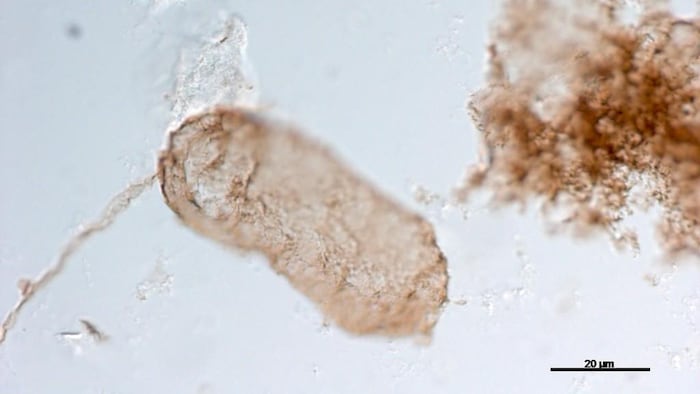Open in full screen mode Image of Navifusa majensis, microfossil from the McDermott Formation in Australia. This 1.75 billion year old microfossil contains thylakoids, which allow it to be identified as a cyanobacteria. Speech synthesis, based on artificial intelligence, makes it possible to generate spoken text from written text . Photosynthetic structures have been observed in fossilized cells 1.75 billion years old. A record. These structures called thylakoids were identified in microfossils of cyanobacteria (Navifusa majensis) discovered in the McDermott Formation in Australia by paleobiologist Catherine Demoulin and her colleagues at the University of Liège in Belgium. A thylakoid resembles a flattened spherical vesicle. It's like a space surrounded by a membrane inside a cell, explains biologist David Morse, of the Plant Biology Research Institute associated with the University of Montreal, who did not participate in the study. It is in these flattened spheres that all the photosynthetic machinery is found, adds the scientist. As a general rule, bacteria do not have an internal membrane. But cyanobacteria are a big exception to the rule! notes the scientist, who considers this work convincing. Loading ELSE ON INFO: Transport overload during the Paris Olympics, a “catastrophe” announced? We clearly see in the micrographs a cell with several lines inside. This type of structure is not observed anywhere other than in cells with thylakoids. A quote from David Morse, of the Plant Biology Research Institute The role of cyanobacteria provided with thylakoids is considered by several biologists to be crucial in the occurrence, 2.4 billion years ago, of the great oxygenation of the Earth's atmosphere which profoundly changed the evolution of early life on the planet. But this hypothesis has still not been verified in the fossil record by the discovery of physical evidence that would confirm this chronology. There is a discordance between the when the concentration of oxygen begins to rise on Earth and the appearance in the fossil record of organisms with thylakoids, explains David Morse, of the Plant Biology Research Institute. < p class="StyledBodyHtmlParagraph-sc-48221190-4 hnvfyV">In fact, until now, the oldest known thylakoid fossils were 550 million years old. Those that we have identified therefore make it possible to push back the fossil record by 1.2 billion years, explains paleobiologist Emmanuelle Javaux. It It is therefore still not possible to establish a cause and effect link between the thylakoids and high oxygenation, notes David Morse. As the oldest fossils with thylakoids date back 550 million years and the " oxygen started rising 2.4 billion years ago, we can't prove anything. A quote from David Morse of the Plant Biology Research Institute < p class="StyledBodyHtmlParagraph-sc-48221190-4 hnvfyV">But recent discoveries bring us closer to proof of the involvement of cyanobacteria with thylakoids in the accumulation of oxygen in the Earth's atmosphere. But the chronology of the origin of oxygenic photosynthesis and the type of cyanobacteria involved during great oxygenation remain debated, indicates David Morse. Another source would it have caused the increase in oxygen, like proto-cyanobacteria unknown to science? According to Mr. Morse, the discovery described in the study published in the journal Nature (New window) (in English) makes it possible to glimpse the possibility of discovering thylakoids in even older fossil cyanobacteria. And thus establish once and for all the role of thylakoids in the massive accumulation of oxygen on Earth. We are getting closer and closer to the magic number of 2.4 billion years, notes David Morse. Emmanuelle Javaux recalls that the Microscopic life constitutes the most diverse and abundant form of life on Earth since the origin of life. Studying its fossil record with new approaches allows us to understand how life has evolved for at least 3.5 billion years. Some of this research even tells us how to look for traces of life beyond Earth, she concludes.
Transport overload during the Paris Olympics, a “catastrophe” announced?
Evidence of photosynthesis 1.75 billion years ago

